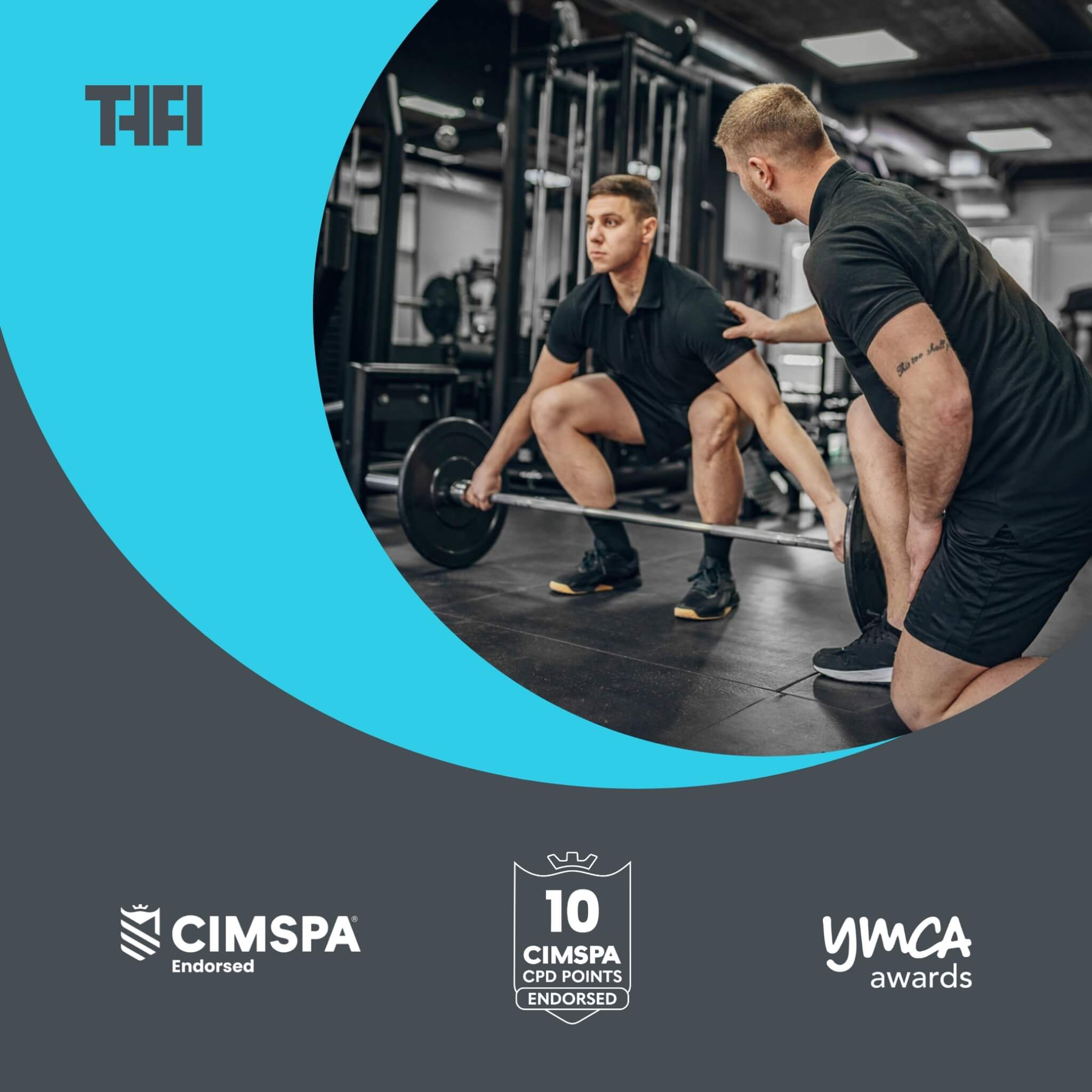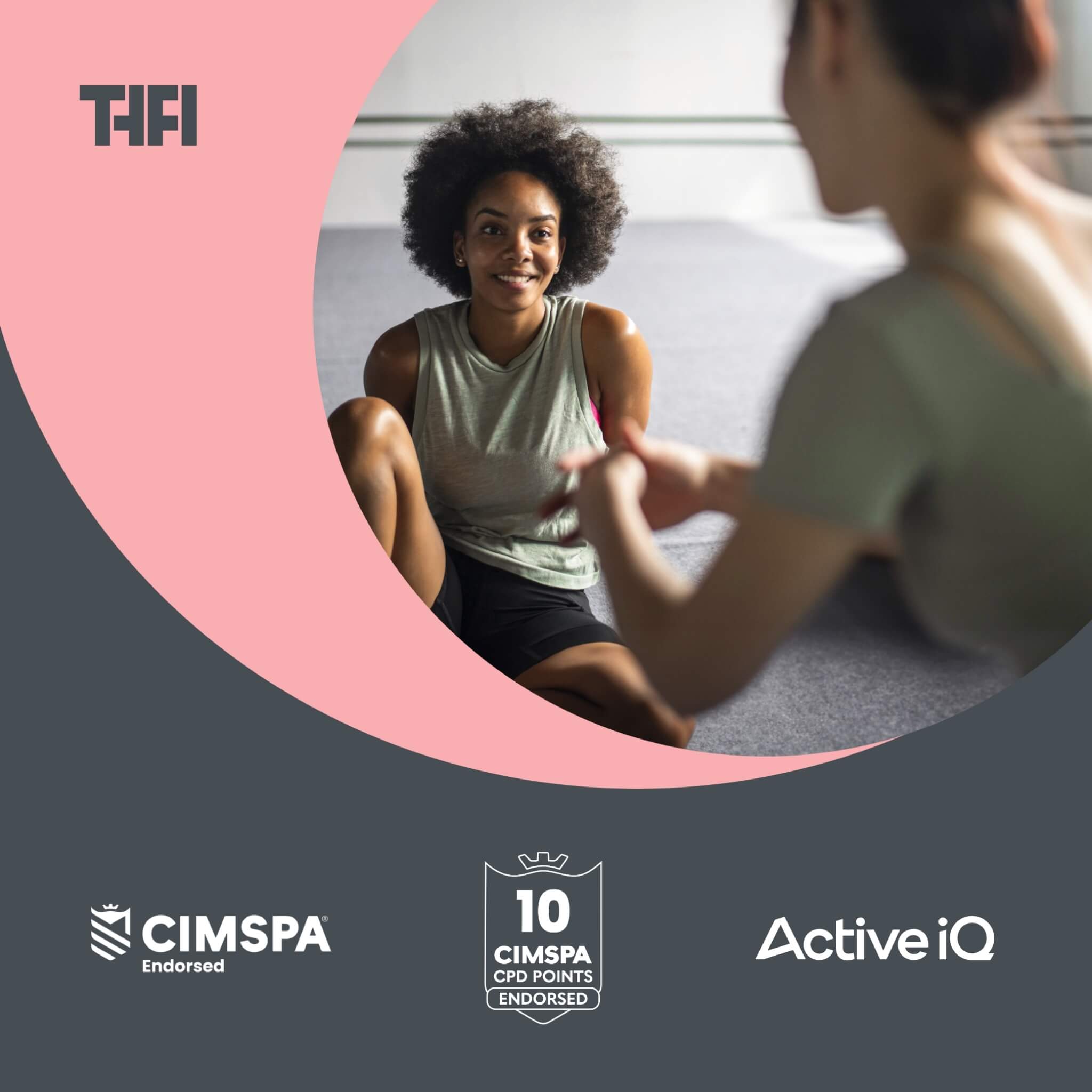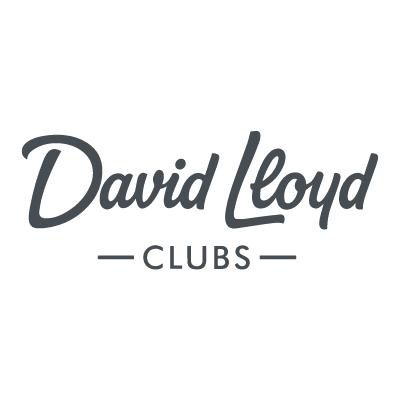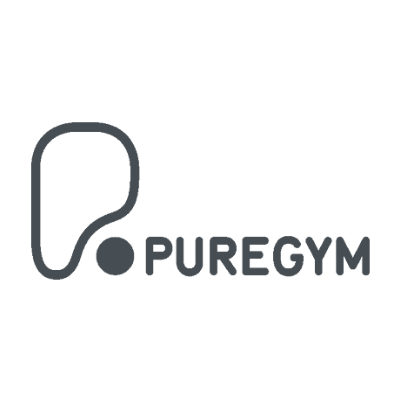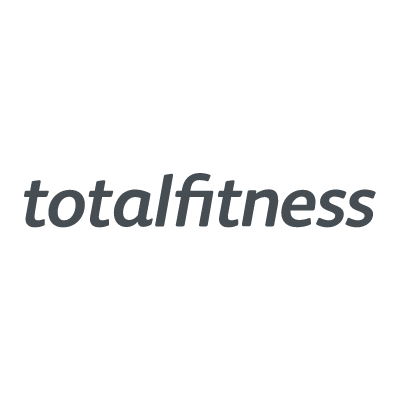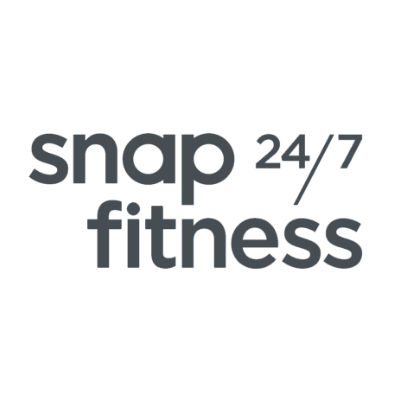How Corrective Exercise Programs Can Boost Your Earnings As A PT

Would you know what to do if a client came to you asking for help recovering from an injury or nursing a bad back?
Most average trainers wouldn’t even know where to begin.
Yet, whether it’s office workers with back pain, new mums getting back to fitness, or injured athletes wanting guidance to train safely, it’s something most PTs will be asked again and again.
Trainers who’ve completed high-quality personal training courses are often better equipped to support clients through injury recovery using safe, corrective techniques that build trust and long-term results.
This is where having a knowledge of corrective exercise programs is an ‘ace in the hole.’
Having a Corrective Exercises Specialist qualification sets you up as an expert among trainers, opens the door to a wider range of clients, and allows you to charge more for your services.
But what are corrective exercises and how do they benefit your clients?
How do you implement them into your programs?
And what are the misconceptions you need to address to get ‘buy-in’ from the people you work with?
In this comprehensive guide, we answer these questions and more so you can take steps to become a more well-rounded personal trainer who offers services your competitors can’t...
Understanding Corrective Exercise
What Is Corrective Exercise?
At its core, corrective exercise stands as a bespoke approach, tailored to address and rectify the imbalances and inefficiencies in a person's movement patterns which can cause pain or injury. It’s not about pushing for heavier lifts or longer runs; instead, it focuses on the foundation of all physical activities: the quality of movement.
Imagine you’re building a house. Would you start with the roof before ensuring the foundations were solid? Of course not. That’s the philosophy behind corrective exercise. It’s the groundwork that enables everything else to function optimally, from daily tasks to peak athletic performance.
By identifying and addressing muscular imbalances and poor movement patterns, corrective exercises help to prevent injuries before they happen and can significantly improve a client’s overall performance and well-being. This is achieved through a combination of assessment and a bespoke program of stretches, strengthening exercises, and movement patterns designed to bring the body back into a state of balance and efficiency.
The Demand for Corrective Exercise in Today's Fitness Industry
In an era where the fitness industry is more competitive than ever, specialising in corrective exercise offers a golden opportunity to stand out. The rise in awareness around the importance of holistic, preventive health and wellness has led to an increased demand for personalised, health-focused training programs.
According to the American Council on Exercise, there’s a growing trend towards preventive health measures and away from reactive treatments. People are increasingly seeking fitness professionals who can not only help them achieve their aesthetic goals but also improve their quality of life and reduce the risk of injury.
This demand is reflected in the marketplace. A survey conducted by the National Strength and Conditioning Association (NSCA) highlighted that personal trainers who offered specialised services, such as corrective exercise, reported higher earnings compared to their counterparts who did not.
Clients are willing to pay a premium for trainers who can provide this level of specialised care, recognising the value of investing in their health and well-being.
With this growing demand, personal trainers equipped with the knowledge and skills to offer corrective exercise programs find themselves in a lucrative niche.
They attract a wider range of clients, from those recovering from injuries to athletes looking to enhance their performance by fine-tuning their movement patterns. This diversity not only leads to increased job satisfaction but also to a broader client base and, ultimately, higher earnings.
What are the Benefits of Offering Corrective Exercises?
The Transformative Impact of Corrective Exercises for Clients
You can profoundly impact the lives of your clients by integrating corrective exercises into your training programs.
When done right, it will increase client satisfaction, improve retention, and even lead to more word-of-mouth referrals that feed your business. Here’s why:
Enhanced Wellbeing and Improved Performance: Client won’t always come to you solely with fitness goals. They may want to feel better and perform better in the gym free from pain or discomfort. Corrective exercises address the root causes of issues, such as muscular imbalances or poor posture, leading to noticeable improvements in daily life and physical activities. This holistic approach to health and fitness increases client satisfaction and retention, as they feel their investment translates into tangible, life-enhancing results.
Injury Prevention and Recovery: A significant benefit of corrective exercise is its role in injury prevention and recovery. Clients who have experienced chronic pain or those recovering from injuries often find traditional workouts intimidating or unfeasible. Offering corrective exercise as a service not only helps these clients heal and strengthen their bodies safely but also positions you as a trusted wellness advocate, fostering a loyal client base that values your expertise.
Long-term Engagement: Unlike more transient fitness trends, corrective exercise focuses on sustainable, long-term improvement in movement quality and health. This approach encourages ongoing engagement, as clients are invested in a process that offers continuous improvement rather than quick, potentially unsustainable results. The commitment to a corrective exercise program often translates into longer training relationships, ensuring steady income and opportunities for trainers.
Referrals and Niche Specialisation: Clients who experience the profound benefits of corrective exercise are likely to become vocal advocates for your services, generating referrals that expand your client base. Moreover, specialising in corrective exercises allows you to target specific demographics or needs, such as athletes looking to enhance performance, individuals seeking to manage or recover from injury, or office workers aiming to improve posture and reduce back pain. This specialisation can differentiate you in a crowded market, attracting clients willing to pay a premium for your more targeted expertise.
How Corrective Exercises Can Increase Client Retention and Attract New Clients
Incorporating corrective exercises into your repertoire does more than just broaden your skill set – it directly impacts your ability to retain clients and attract new ones. Here's how:
Personalisation and Value: Corrective exercise programs are highly personalised, addressing the unique needs and goals of each client. This bespoke approach demonstrates a high level of care and investment in clients' health, significantly enhancing perceived value. Clients are more likely to stick with a trainer who goes beyond generic fitness routines to offer a service that feels ‘made to measure’.
Results Beyond Aesthetics: While many clients initially focus on looking good, the benefits of corrective exercises – reduced pain, improved mobility, and enhanced overall quality of life – introduce them to a deeper understanding of fitness. Satisfied clients are your best advocates, often sharing their positive experiences with friends and family, leading to referrals that will grow your client base.
Niche Marketing Advantage: Specialising in corrective exercises allows you to target specific demographics, such as individuals recovering from injuries, older adults seeking to maintain mobility, or office workers looking to correct postural issues. Marketing your services to these niche segments can set you apart in a crowded market, attracting clients who are seeking exactly what you offer.
Higher Pricing Justification: Given the specialised nature of corrective exercise programs, you can justifiably charge more for your services. Clients understand and are willing to pay a premium for expertise that not only helps them achieve their fitness goals but also improves their overall health and quality of life.
Long-Term Client Relationships: Corrective exercise is not a quick fix but a long-term investment in health and wellness. By guiding clients through this journey, you foster long-term relationships, ensuring steady business and reducing the need to constantly attract new clients.
Implementing Corrective Exercise into Your Training Programs
Getting certified is your first step. Your Exercise Specialist qualification isn’t just a piece of paper, it gives you a deeper understanding of human anatomy, physiology, and biomechanics, as well as the specific methodologies to assess and correct imbalances.
Choosing a certification should be based on comprehensive curricula that best align with your career goals and training philosophy.
Investing time and resources into this education will not only bolster your credentials but also equip you with the knowledge to make a real difference in your clients’ lives.
Integrating Corrective Exercises: Practical Tips and Strategies
Once certified, the next step is to seamlessly integrate corrective exercise into your current training programs. Here’s how to do it effectively:
Start with Assessments: Begin every client relationship with a thorough assessment to identify any muscular imbalances, limitations in mobility, or areas of discomfort. This tailored approach ensures that the corrective exercises you integrate are specifically targeted to address each client's unique needs.
Educate Your Clients: Take the time to educate your clients on the importance of corrective exercise and how it complements their fitness goals. Highlighting the benefits, such as improved performance, reduced injury risk, and enhanced daily living, can increase their buy-in and commitment from day 1.
Incorporate Exercises Gradually: Introduce corrective exercises step by step into your clients' routines rather than all at once. Starting with a few key exercises allows them to adjust and understand the purpose behind each movement. As they progress, you can add more complex exercises to continuously challenge and benefit them.
Monitor and Adjust: Regularly review and adjust the corrective exercise components of your clients' programs based on their feedback and progress. This dynamic approach keeps the training relevant and effective, encouraging continued engagement and satisfaction.
Practical Examples of Corrective Exercises in Action
Incorporating corrective exercises into your training regimen is not just about addressing current imbalances or injuries; it's about setting a foundation for long-term health and performance for your clients. To give you a clearer idea of how to implement these strategies, let’s explore some practical examples of corrective exercises commonly used by trainers.
Glute Bridges: Ideal for clients who sit for prolonged periods, glute bridges activate and strengthen the gluteus muscles, which are often weakened by excessive sitting. This exercise can alleviate lower back pain by improving lumbar stability and hip mobility.
Planks: A versatile core strengthening exercise, planks engage multiple muscle groups simultaneously. They are fundamental in building core stability, which is essential for preventing injuries and enhancing athletic performance.
Wall Angels: Perfect for clients with desk jobs, wall angels work to counteract the forward shoulder slump and neck strain common in individuals who spend hours at a computer. This exercise promotes shoulder mobility and upper back strength, contributing to better posture.
Bird-Dogs: This balance and stability exercise challenges the core while encouraging proper spinal alignment. Bird-dogs are excellent for clients recovering from back injuries or those looking to prevent back pain through core strengthening.
Dead Bugs: Targeting the deep core muscles, dead bugs help improve core stability and reduce the risk of lower back pain. This exercise is particularly beneficial for beginners, as it teaches core engagement and control in a safe, supine position.
Scapular Wall Slides: Designed to improve the mobility of the shoulder blades and strengthen the muscles of the upper back, scapular wall slides can help correct rounded shoulders and enhance posture, essential for clients spending significant time in front of screens.
Foam Rolling Techniques: Incorporating foam rolling before or after workouts can increase muscle flexibility, reduce tightness, and aid in recovery. Demonstrating proper foam rolling techniques can also empower clients to take an active role in their injury prevention and recovery process.
Integrating These Exercises Into Workout Sessions
When introducing corrective exercises into your clients' programs, start by assessing their specific needs and limitations. Select exercises that target their weaknesses and gradually build their program around improving these areas. Education is key – ensure your clients understand the purpose behind each exercise and how it contributes to their overall fitness goals.
Remember, the goal of corrective exercises is not to replace traditional strength and conditioning work but to complement it. By integrating these exercises thoughtfully, you're not only enhancing your clients' performance and well-being but also establishing yourself as a knowledgeable, versatile personal trainer capable of addressing a wide range of physical fitness needs.
This approach to training not only sets you apart in the competitive landscape of personal training but also underscores your commitment to the holistic health and success of your clients. As you expand your toolkit with these corrective exercises, you're taking significant steps toward building a more successful, rewarding career.
Addressing Common Misconceptions and How to Overcome Them
As you integrate corrective exercises into your training offerings, you'll likely encounter a range of misconceptions from both clients and industry peers. These challenges, while initially seeming like obstacles, can actually serve as opportunities to educate and advocate for the importance of corrective exercise. Let's tackle some of these common misconceptions and explore strategies to overcome them.
Misconception 1: Corrective Exercise Is Only for Injured Clients
Many believe that corrective exercise is solely rehabilitation work, relevant only for those recovering from injury. This misunderstanding can limit the perceived value of corrective exercises among a broader client base.
Strategy: Emphasise the preventative aspect of corrective exercises. Highlight stories or case studies where these exercises have helped clients avoid injuries, enhance performance, and improve overall quality of life. Educating clients about the holistic benefits of a well-rounded fitness regime that includes corrective exercise can broaden its appeal.
Misconception 2: Corrective Exercises Are Boring and Ineffective
Some clients (and trainers) may perceive corrective exercises as less exciting compared to high-intensity workouts or strength training, questioning their effectiveness.
Strategy: Integrate corrective exercises into the workout in a way that feels seamless and engaging. Show how these exercises can lead to noticeable improvements in performance and the ability to perform high-intensity workouts more safely and effectively. Sharing success metrics, like increased range of motion, reduced pain, or enhanced strength in previously weak areas, can also help illustrate their effectiveness.
Misconception 3: Corrective Exercises Don't Contribute to Fitness Goals
Clients often come with specific goals like weight loss, muscle gain, or improved athletic performance. There's a misconception that corrective exercises won't contribute to these goals.
Strategy: Demonstrate how corrective exercises are foundational to achieving and surpassing fitness goals. For example, explain how improving posture and alignment can enhance the efficiency and safety of weightlifting, leading to better muscle gain outcomes. Use assessments and progress tracking to show clients how corrective exercises directly contribute to their broader fitness journey.
Misconception 4: Corrective Exercise Requires a Lot of Extra Time
Clients pressed for time might be resistant to adding what they perceive as extra steps to their workout routines.
Strategy: Efficiently integrate corrective exercises into existing routines without significantly extending workout times. Show clients how these exercises can replace less effective parts of their workout or be incorporated into warm-ups and cool-downs. Highlighting the long-term time savings through injury prevention and more efficient workouts can also be persuasive.
Misconception 5: High-Level Certification Is Unnecessary for Offering Corrective Exercises
Some trainers may feel that their general fitness certification is sufficient to offer corrective exercises, potentially leading to ineffective or unsafe practices.
Strategy: Educate other trainers and clients about the complexities of human movement and how specialised training equips professionals with the skills to identify and correct imbalances safely. Sharing knowledge and results from your certified training can underline the value of specialised education in this field.
By addressing these misconceptions head-on, personal trainers can not only elevate their practice but also champion the broader adoption of corrective exercise within the fitness industry. This approach not only helps in overcoming challenges but also positions you as a leader and advocate for comprehensive, holistic fitness and well-being.









